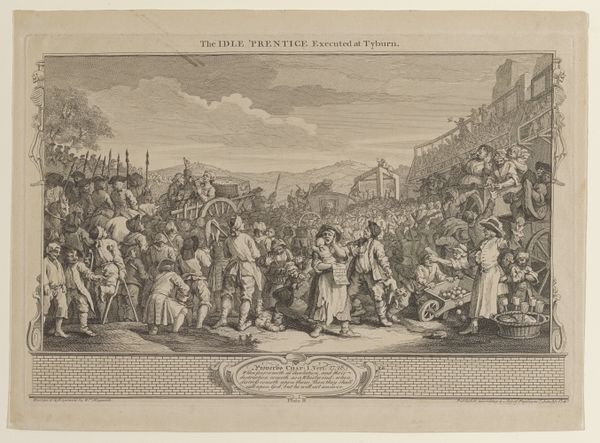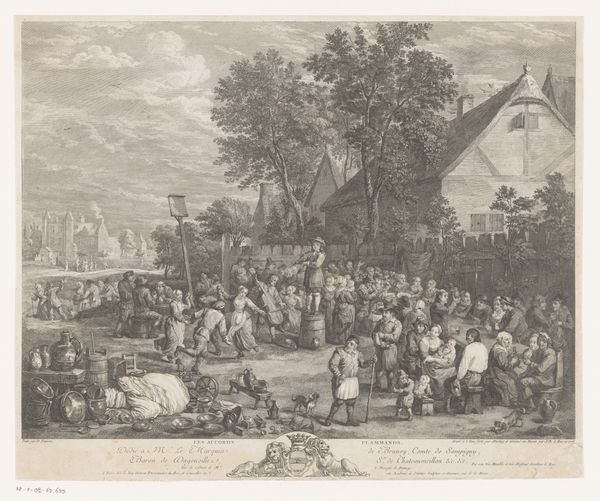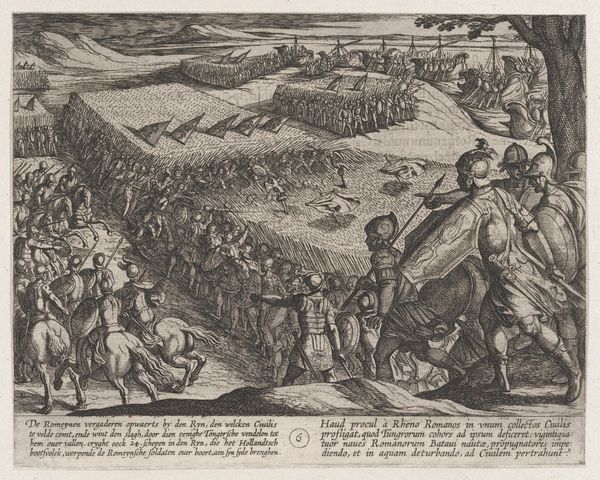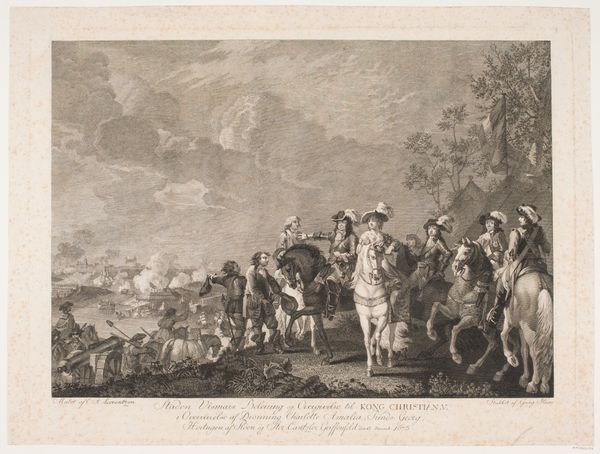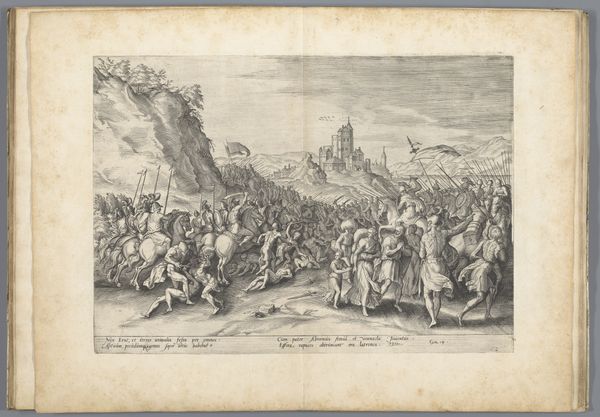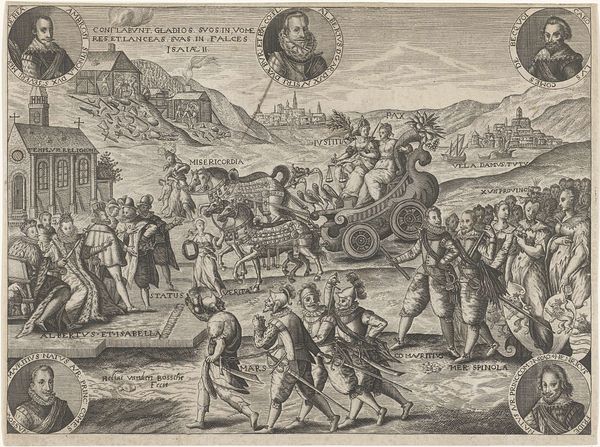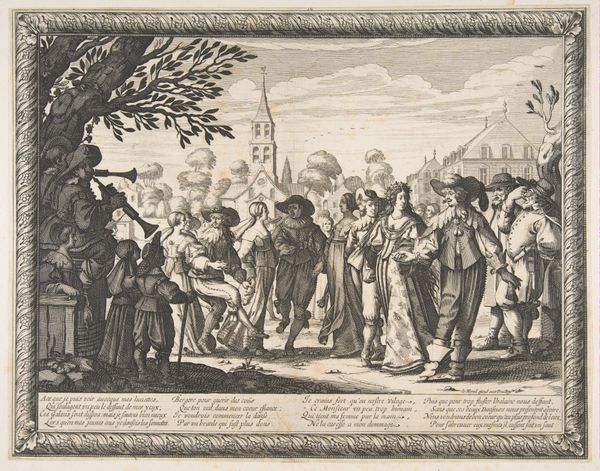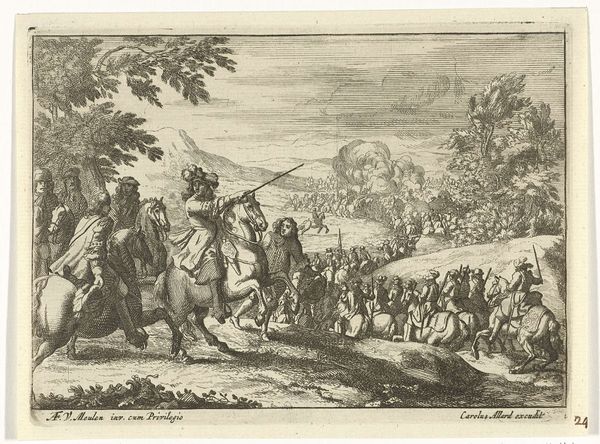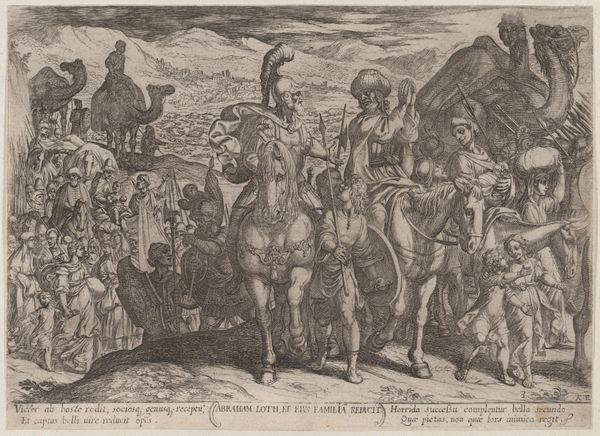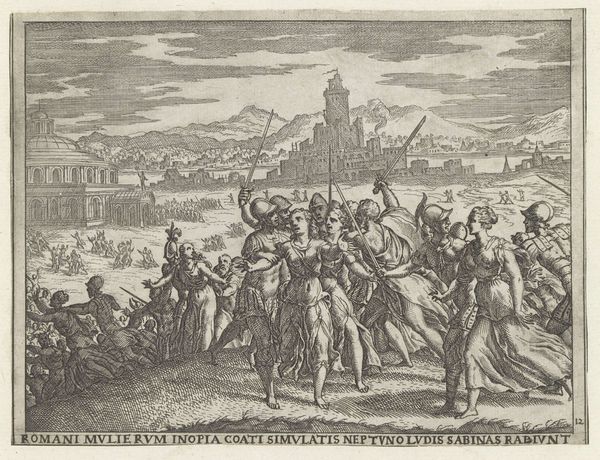
The Idle 'Prentice Executed at Tyburn: Industry and Idleness, plate 11 1747
0:00
0:00
drawing, print, engraving
#
drawing
#
narrative-art
# print
#
figuration
#
genre-painting
#
history-painting
#
engraving
Dimensions: sheet: 10 5/8 x 15 13/16 in. (27 x 40.2 cm)
Copyright: Public Domain
Curator: Here we have "The Idle 'Prentice Executed at Tyburn," plate 11 from William Hogarth's "Industry and Idleness" series, dating back to 1747. It’s currently housed at the Metropolitan Museum of Art. The print work provides a stark, almost journalistic view into 18th-century societal norms. Editor: My initial feeling is…bleak, but undeniably compelling. There's this immense crowd, rendered in intricate detail. Even in monochrome, the artist conveys a riot of emotions, mostly anticipation, dread, you know, a very British mix. It makes my stomach churn a little, to be honest. Curator: Absolutely. Hogarth utilizes the print medium masterfully here. The engraving process allowed for mass production and dissemination, broadening its social reach, it also encouraged people to contemplate these themes of industry versus idleness, crime and punishment, poverty and wealth. Consider, too, the economic conditions. The materials and production for a print like this was relatively inexpensive. Editor: It’s clever how the bustling scene contrasts with the grim stillness implied by the gallows looming in the background. All those individual faces... each person caught up in the spectacle. The tiny details – what are those? Are they selling trinkets and food on the edges of the crowd? This suggests how closely commerce was interwoven with even such a dire occasion. I see apples. Always gotta make a living, I suppose, no matter the context. Curator: Exactly, there's an entire industry supporting and profiting from this very public form of justice. This print functions almost like social commentary critiquing the commodification of human suffering. Think about the engraving technique itself – its repetitive, labor-intensive nature mirrors the themes of industry explored within the series, doesn't it? Editor: It does indeed. You feel the labor almost visually in the lines. I'm just left wondering about the 'prentice, though we do not actually see him. A life wasted… a brutal, cautionary tale imprinted on paper for mass consumption. A grim social theater laid bare. Curator: Indeed, the means of creating and disseminating such work serves a complex social function. These engravings weren't merely art objects, they were commodities in their own right. It really makes you ponder the economic engine of societal morality in the period, doesn’t it? Editor: Definitely, and on the lingering echoes such dark entertainments leave behind. Thank you, Hogarth for stirring these things up for future reflection!
Comments
No comments
Be the first to comment and join the conversation on the ultimate creative platform.
